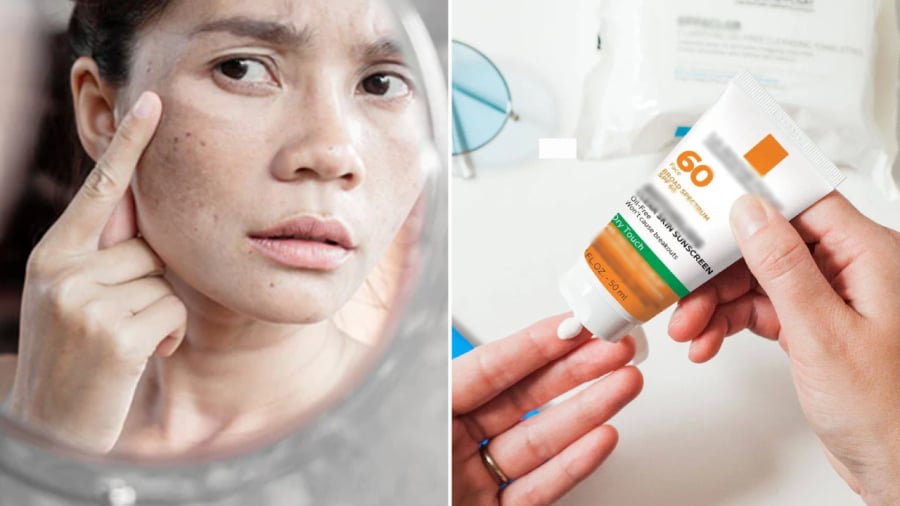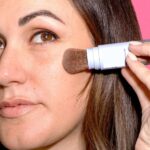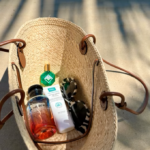Applying sunscreen is a simple way to protect your skin, and many women do it every day. However, not everyone knows the correct way to apply it. Using sunscreen incorrectly can leave your skin unprotected and vulnerable to the sun’s rays.
Mistakes When Applying Sunscreen That Can Lead to Skin Discoloration
- Not applying enough sunscreen
Some people believe that only a small amount of sunscreen is needed on the face to save money and avoid a greasy feeling. During the hot summer days, you may be reluctant to apply a generous amount of sunscreen as recommended by the manufacturer, fearing that it will feel sticky and uncomfortable when you start sweating. However, this can be a costly mistake.
Applying insufficient sunscreen will not provide your skin with the protection it needs. The UV rays from the sun will still be able to damage your skin, leading to issues such as discoloration and accelerated aging.
In fact, applying too little sunscreen may render it ineffective, essentially negating its purpose.

- Not reapplying sunscreen
Many people make the mistake of applying sunscreen only once before heading out for the day. However, sunscreen is only effective for a limited period. Additionally, sweating can cause it to wear off, reducing its protective capabilities. To ensure adequate protection, it is recommended to reapply sunscreen every 2-3 hours, following the manufacturer’s instructions.
- How much sunscreen is enough?
According to experts, the ideal amount of sunscreen to apply daily is 2mg/cm2 of skin. This translates to about 1/2 a teaspoon or 1-2ml for the face alone. The same quantity should be applied to other exposed areas like the neck, arms, and legs.
For full-body coverage, an adult would require approximately 25-29 grams of sunscreen. To save costs, you can use a separate, potentially more expensive product for your face and a different one for your body.
Additional Summer Sun Protection Tips
- Wear sun-protective clothing and sunglasses
In addition to daily sunscreen application, you can further protect your skin by wearing sun-protective clothing, such as long-sleeved shirts and sun hats. Sunglasses are also important as they block both UVA and UVB rays, safeguarding your eyes and the delicate skin around them.
- Stay hydrated
It is crucial to stay properly hydrated, especially during hot summer days. Drinking enough water not only maintains your body’s functions and prevents fatigue but also keeps your skin moisturized and supple.
- Pay attention to medications
If you are taking any medications, be aware of their potential side effects. Certain drugs can increase your skin’s sensitivity to sunlight, making it more susceptible to sun damage. Consult the list of medications that may cause photosensitivity and discuss alternative options with your doctor to better protect your skin.
To effectively protect your skin from the harmful effects of UV rays, it is essential to apply the correct amount of sunscreen and reapply it at regular intervals. Avoid the common mistakes mentioned above to ensure your skin stays healthy and protected.
Can Powder Sunscreen Replace Traditional Sunscreen?
Introducing the latest innovation in sun protection: a powder sunscreen that promises to revolutionize the way we protect our skin from the sun’s harmful rays. With claims of overcoming the drawbacks of traditional cream-based sunscreens, this powder sunscreen has sparked curiosity among consumers. But can it truly replace our trusted creams and lotions?
Slathering on Sunscreen Isn’t Enough: 3 Crucial Steps to Take After to Prevent Tan Lines and Breakouts!
“Are you tired of diligently applying sunscreen every morning, only to still struggle with dark spots, acne, or dry skin? You might be missing some crucial post-application steps. Dermatologists reveal the top three things you should do immediately after sunscreen application for comprehensive skin protection and health, radiating beauty from within.”



































